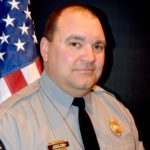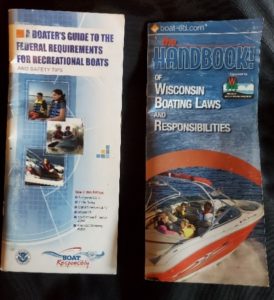An article from WWA’s Words From The Wardens.
This article originally appeared in Wisconsin Waterfowl Association’s November, 2021 eNewsletter.
 By DNR Boating Law Administrator Darren Kuhn; Darren.kuhn@wisconsin.gov
By DNR Boating Law Administrator Darren Kuhn; Darren.kuhn@wisconsin.gov
As the days get shorter and the fall colors decorate the trees, more waterfowl start migrations. We will begin to see the big northern mallards fill the marshes and the rafts of divers taking over larger bodies of water.
Historically, this is the time of the year when more and more waterfowl hunters take on Great Lakes open water hunting. While there are many theories on decoy placement, proper distance from layout boat to chase boats, camouflage, or gray clothing, the priority of this column is all about boat safety.
U.S. COAST GUARD & DNR SHARE GREAT LAKES DUTIES
The Great Lakes, or any outlying waters, are known as shared jurisdiction bodies of water. This means that both the DNR and the U.S. Coast Guard share public safety responsibilities on these bodies of water. It also means there are two sets of rules and regulations that hunters need to be aware of. There are Wisconsin boating laws found in on our DNR website in a downloadable PDF.
 The Wisconsin-required safety equipment generally mirrors what is required under federal law.
The Wisconsin-required safety equipment generally mirrors what is required under federal law.
For instance, any boat that has areas where fuel vapors can accumulate is required to have a fire extinguisher. This could be as simple as an enclosed compartment or live well, or as complex as an enclosed cabin-type boat.
Wisconsin navigation light requirements also mirror federal requirements. Red port or left-facing and green starboard or right-facing bow lights with a white light visible for 360 degrees around the boat are required when operating a motorboat after sunset and before sunrise and in times of inclement weather.
In addition to having the required lights, no additional lights can be utilized that detract or drown out the required navigation lights can be used. In short, the LED white light bars that are frequently being used that make it impossible to see the navigation lights are illegal to use while navigating.
Visual distress signals, commonly referred to as flares, also are required by both Wisconsin and federal boating laws while on the outlying waters. These come in a variety of shapes and sizes. However, the basic requirement is that a boat is equipped with both day and night signaling devices. And, if these are of a pyrotechnic variety (flare), boats are required to have three current, non-expired devices on board. Each device will have an expiration date printed on the side of the device. Expired devices don’t count toward the required number of devices. There is nothing wrong with having the expired devices on board if three non-expired devices are also present.
U.S. AND STATE BOAT LAWS: BOTH SETS APPLY ON GREAT LAKES
In some situations, the state and federal boating laws are not the same.
One of those examples is the personal flotation device (PFDs/life jacket). Wisconsin law requires a boat be equipped with one wearable-type life jacket that is in serviceable condition, readily accessible and properly fitting for each person on board. While the department requests that life jackets are worn anytime a person is on a boat, the law only requires that the life jacket be present and available in case of an emergency.
Federal boating laws require all children 12 years old and younger to wear their life jackets while on board a boat that is underway on the outlying water and not below deck. The federal boating laws on the outlying waters are more restrictive than Wisconsin boating law. This means if you have a child on board while hunting Lake Michigan, that child must wear their life jacket.
Another federal law that is different from Wisconsin boating law is the use of an engine kill switch. The most common version of the engine kill switch is the red lanyard that attaches to the throttle assembly or steering console. Recently, this law was enacted requiring open construction boats 26 feet and smaller to use this engine cut-off switch while travelling at a speed greater than slow-no-wake speed. Wisconsin only requires this while operating personal watercraft.
 While a majority of the Wisconsin boating laws are the same as the federal boating laws, there are some distinct differences. For questions regarding Wisconsin boating laws, feel free to contact your local conservation warden. For questions regarding federal boating laws, I would suggest searching the coast guard web site for more details at: https://www.uscgboating.org/regulations/.
While a majority of the Wisconsin boating laws are the same as the federal boating laws, there are some distinct differences. For questions regarding Wisconsin boating laws, feel free to contact your local conservation warden. For questions regarding federal boating laws, I would suggest searching the coast guard web site for more details at: https://www.uscgboating.org/regulations/.
Also please keep track of the weather. The Great Lakes in the fall are generally more wind swept which brings dangerous wave conditions and unsafe waters.
Remember: There isn’t a duck dinner worth your life. So always wear your life jacket.
